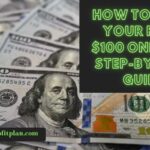Welcome to my article How to Find High-Converting Products on ClickBank. So, you’ve decided to dive into the world of affiliate marketing on ClickBank. Congratulations! You’ve just entered a world full of potential—where a single click can put cash in your pocket. But here’s the catch: not all products on ClickBank are created equal. Some might feel like hidden gems, just waiting to be discovered, while others… well, they’re like the mystery meat at a buffet. You’re not entirely sure what’s inside, but it’s probably not going to be a hit with your audience.
The trick to success on ClickBank is finding products that actually convert. With a little know-how and some strategic digging, you can spot these goldmine products like a pro. In this guide, we’re going to walk you through the process of finding those top-tier ClickBank products—the ones that make your audience click “buy now” like their life depends on it. By the end of this article, you’ll know exactly what to look for, how to navigate ClickBank’s marketplace like a seasoned detective, and how to turn your promotions into serious revenue. Let’s get started before someone else snatches up all the good products!
Access My Proven Blueprint for $50-$100 Daily Income – Watch This FREE Video Now >>>

Understanding ClickBank Metrics: What Makes a Product High-Converting?
ClickBank’s marketplace is like a treasure hunt, except instead of digging for gold, you’re sifting through gravity scores, conversion rates, and commission structures. The goal? To find products that practically sell themselves. But before you throw all your promotional efforts behind that shiny, high-commission product, let’s talk about the metrics that actually matter.
First up: Gravity Score. This number tells you how many affiliates have successfully sold this product in the past 12 weeks. The higher the gravity, the more affiliates are making sales, which means the product is converting well. But here’s the catch—high gravity can also mean heavy competition. So, if the gravity is through the roof, be prepared to fight for your slice of the pie. On the flip side, if it’s too low, you might be dealing with a dud. The sweet spot? Look for a gravity score that shows demand, but not so much that you’re in a crowded market.
Next is Average $/Conversion. This is your potential payday. It tells you the average commission you’ll earn per sale. Now, it’s tempting to chase the big-ticket items, but keep in mind that higher-priced products may have a tougher time converting, especially if your audience isn’t ready to drop serious cash. Sometimes, the mid-range products with smaller, consistent payouts can be the real moneymakers.
Finally, don’t forget about recurring commissions. Some products offer a one-time payout, but the true beauty of affiliate marketing is passive income. Recurring products, like memberships or subscription-based services, pay you over and over again. Imagine getting paid while you binge-watch your favorite show. Yeah, that’s the dream.
So, when hunting for high-converting products, balance these metrics like a pro. Don’t just go for flashy numbers—look for products with solid gravity, decent payouts, and, if possible, those sweet, sweet recurring commissions. Trust me, your future self (and your bank account) will thank you.
How to Use ClickBank’s Marketplace to Find Profitable Products
Alright, you’ve got your coffee (or energy drink—no judgment), and you’re ready to dive into ClickBank’s marketplace. But wait, it’s not as simple as scrolling through and randomly picking something shiny. No, my friend, there’s an art to this process, and it starts with learning how to navigate the ClickBank marketplace like a seasoned pro.
First things first: Categories are your best friend. You can’t be an expert in every category, so start by picking a niche you know or one that aligns with your audience. It’s like choosing a Netflix show—don’t pick a genre you hate just because it’s trending. Stick with what resonates.
Now, onto the product filters. These are your secret weapons. You can filter products by gravity, average sale amount, and even initial conversion rates. This is where the magic happens. Looking for products that are selling well? Set the gravity filter to show you the top performers. Filters help you zone in on products that fit your strategy, so use them liberally.
Then, we’ve got the “average sale” filter. This one’s important if you’re aiming for big commissions. Products with higher average sale prices generally pay better, but keep in mind they may need more convincing to get a sale. If you’re looking for something with quick conversions, go for products with a more reasonable price tag—people are more likely to impulse-buy a $49 program than a $499 one (unless it comes with a lifetime supply of pizza).
Finally, don’t forget to check the “rebill” option when browsing. This will show you products that offer recurring commissions. Find a solid product that keeps customers hooked, and you’ll be getting paid while you’re sipping cocktails on the beach—or let’s be real, while you’re binge-watching your favorite show in sweatpants.
So, with these tools in hand, go forth and conquer the ClickBank marketplace. It’s all about finding that profitable product that clicks with your audience and keeps those commissions rolling in. Now, go get ‘em!
Analyzing Product Pages and Affiliate Resources for Conversion Clues
So, you’ve found a product on ClickBank that looks promising—good gravity, decent payout, maybe even some of those dreamy recurring commissions. But before you start plastering affiliate links all over the internet, there’s one more crucial step: taking a good, hard look at the product’s sales page and the affiliate resources. This is where you separate the “Oh wow, I need this!” products from the ones that make people click away faster than an ad for extended car warranties.
Access My Proven Blueprint for $50-$100 Daily Income – Watch This FREE Video Now >>>
First, let’s talk about the product’s sales page. This is where the magic (or disaster) happens. A high-converting sales page should grab attention from the get-go—think bold headlines, clean design, and a clear call-to-action that even your grandma could understand. If the page looks like it hasn’t been updated since the early days of the internet (we’re talking Comic Sans and flashing GIFs), run. A good sales page should be modern, visually appealing, and easy to navigate.
Then, there’s the copywriting. The text on the page should be persuasive, hitting on pain points, benefits, and providing a clear solution. If the page reads like a 20-page novel about the product’s history, that’s a red flag. Look for concise, benefit-driven copy, emotional triggers, and some urgency (e.g., limited-time offers) to push people toward buying now instead of “coming back later” (which, spoiler alert, they probably won’t).
Next, let’s check for social proof. Does the page include testimonials, video reviews, or any case studies? These are gold when it comes to converting visitors into buyers. If there’s no social proof, it might be a tough sell.
Now, onto affiliate resources. A product that’s serious about helping affiliates succeed will often have an affiliate page loaded with marketing goodies—email swipes, banner ads, video content, and even pre-made landing pages. If you find these, it’s a good sign the vendor is committed to making sure affiliates (that’s you) can easily promote their product. If the affiliate page is bare bones or nonexistent, that’s a red flag. You’ll end up doing way more work trying to market the product, and honestly, who has time for that?
Lastly, consider if the product is part of a funnel. Some ClickBank products have upsells and downsells built in, meaning customers might buy a low-cost item first, then be offered higher-priced products later. As an affiliate, this can translate into multiple commissions from one customer. If a product offers a funnel with juicy upsells, that’s a good sign that the vendor knows how to maximize conversions—which means more cash in your pocket.
So, before you start promoting a ClickBank product, make sure to give the sales page a thorough once-over. A well-crafted page, loaded with conversion-friendly features, and backed by strong affiliate resources is your best bet for turning clicks into cold, hard cash. After all, we’re not here to work harder—we’re here to work smarter!
Testing and Tracking Your ClickBank Product Performance
Okay, so you’ve picked out a few ClickBank products that look like winners. Now comes the fun part: testing them out in the wild to see if they actually convert—because as much as we wish it were true, just slapping an affiliate link on your blog won’t automatically lead to piles of cash. No, my friend, this is where the real affiliate marketing hustle comes in: testing and tracking your ClickBank product performance.
First things first: don’t put all your eggs in one basket. Sure, that product with the high gravity score might seem like a sure thing, but you don’t know how your audience is going to react. This is why it’s smart to test a few different products at once. Think of it like going to a buffet—why settle for just the mashed potatoes when you can sample the chicken, the pasta, and maybe even the mystery dessert? Test multiple products and see which one resonates with your audience.
Now, once you’ve got those products out there, you’ll need to track the heck out of them. ClickBank makes this pretty easy with their built-in tracking tools, but you should definitely be using affiliate tracking IDs (TIDs) for each product you promote. These let you see exactly where your traffic and sales are coming from. Say you’re promoting the same product on your blog, through email marketing, and on social media. With tracking IDs, you can figure out which platform is crushing it and which one’s… well, kind of a dud. No more guessing games. You’ll have the data to back up your next move.
Speaking of data, let’s talk about ClickBank’s reporting dashboard. This is your new best friend. It gives you a clear picture of clicks, conversions, and earnings—all in one place. You can see how many people clicked on your link, how many of those clicks turned into sales, and how much money you made. And the best part? You can use this information to optimize your campaigns. If one product is getting a ton of clicks but no conversions, it’s time to dig into why. Maybe the sales page isn’t compelling enough, or maybe the product isn’t quite right for your audience.
Now let’s talk about split testing—the secret weapon of successful affiliates. Maybe you try out two different headlines in your blog posts, or two different types of ads on Facebook. By running these tests and tracking the results, you can figure out which version brings in more sales.
Once you’ve gathered enough data, it’s time to optimize. Double down on the products and campaigns that are working, and cut ties with the ones that aren’t pulling their weight. This might mean tweaking your ad copy, adjusting your audience targeting, or even swapping out a low-performing product for something new.
So, while it might seem tempting to just set it and forget it, remember that testing and tracking are key to finding success with ClickBank affiliate marketing. Think of it like driving a car—you wouldn’t just floor the gas and hope for the best. You’ve got to keep an eye on the road, adjust the steering, and make sure you’re heading in the right direction. With testing and tracking, you’re steering your way to higher conversions and bigger commissions. Now, go forth and test like the affiliate marketing genius you are!
Using Social Proof and Paid Ads to Drive High Conversions
So, you’ve got a ClickBank product that’s ripe for promotion, but how do you get people to actually click buy instead of aimlessly scrolling past your link? Enter the dynamic duo: social proof and paid ads—your secret weapons for boosting conversions and turning those affiliate clicks into sweet, sweet cash.
Let’s start with social proof, the psychological goldmine that can turn a “meh” buyer into an “OMG, take my money!” customer. In simple terms, social proof is that magical influence other people’s opinions have on us.
When promoting a ClickBank product, look for ones that come packed with testimonials, case studies, and real user reviews. If people see that others have had great results with a product, they’re more likely to believe it’ll work for them, too. Bonus points if you can find a product that features video testimonials—because if a picture is worth a thousand words, a video is like a bestseller in conversion terms. Share these success stories in your promotions, whether it’s on your blog, in emails, or on social media. Even better, if you’ve tried the product yourself, use your own story. Personal endorsements are a trust-building jackpot.
But wait, there’s more! If the product has been featured on well-known sites or endorsed by influencers, slap that “As Seen On” section in your promo materials. People want to feel like they’re buying something that’s been vetted by the masses—or at least by someone more qualified than their neighbor who’s still trying to figure out how to set up Wi-Fi.
Now, let’s talk about the paid ads part of the equation. Think of paid ads as the fuel to your affiliate marketing fire. Platforms like Facebook, Google Ads, and even YouTube allow you to target your ads to the exact audience you want. The goal here? To put your ClickBank product in front of people who are ready to pull out their credit cards faster than you can say “high conversion.”
When setting up your paid ads, start with a laser-focused audience. Let’s say you’re promoting a weight loss supplement. The more specific your targeting, the more likely your ad will land in front of people who are ready to buy. A word to the wise: don’t just throw money at ads blindly. Start with a small budget and test different variations—ad copy, images, videos, even headlines. Paid ads are a lot like fishing: sometimes you have to try a few different baits before you catch the big one.
Speaking of ad copy, here’s where you bring social proof back into play. Use snippets of those glowing testimonials or include stats like “over 10,000 happy customers.” People are way more likely to click on an ad when they see others have already had a positive experience. And don’t forget to include a clear call-to-action. Something like “Get Your Free Trial Now” or “See Results in Just 7 Days” works way better than “Click Here,” which basically says, “Do this thing and hope for the best.”
Retargeting is great for reminding people who didn’t buy the first time around that, hey, this product is still here, and you’re still interested, remember? Retargeting ads can be your best friend when it comes to closing the deal.
To sum it up: social proof builds trust, and paid ads get you in front of the right people. Together, they’re a powerhouse for driving high conversions on ClickBank.
Conclusion: Finding High-Converting Products on ClickBank
And there you have it—your masterclass in tracking down those elusive, high-converting products on ClickBank. You’re now equipped with the tools, strategies, and knowledge to turn your affiliate marketing efforts into a well-oiled, commission-generating machine. Sure, it might take a little bit of time to get everything just right, but once you’ve cracked the code, you’ll be laughing all the way to the bank (or at least to your favorite online shopping cart).
Access My Proven Blueprint for $50-$100 Daily Income – Watch This FREE Video Now >>>
Remember, the key to success lies in understanding ClickBank’s metrics, navigating the marketplace like a pro, and analyzing those product pages with a critical eye. Sprinkle in some social proof and throw a few well-placed paid ads into the mix, and you’re on your way to affiliate greatness. And don’t forget the importance of testing and tracking—because as much as we’d love to, we can’t rely on gut feelings alone in this business. Data is your best friend, and it will guide you to optimize your efforts and maximize those conversions.
So go ahead—jump into the world of ClickBank with confidence. Happy promoting, and may your commissions be ever in your favor!
Thanks a lot for reading my article on “How to Find High-Converting Products on ClickBank” till the end. Hope you’ve helped. See you with another article.










